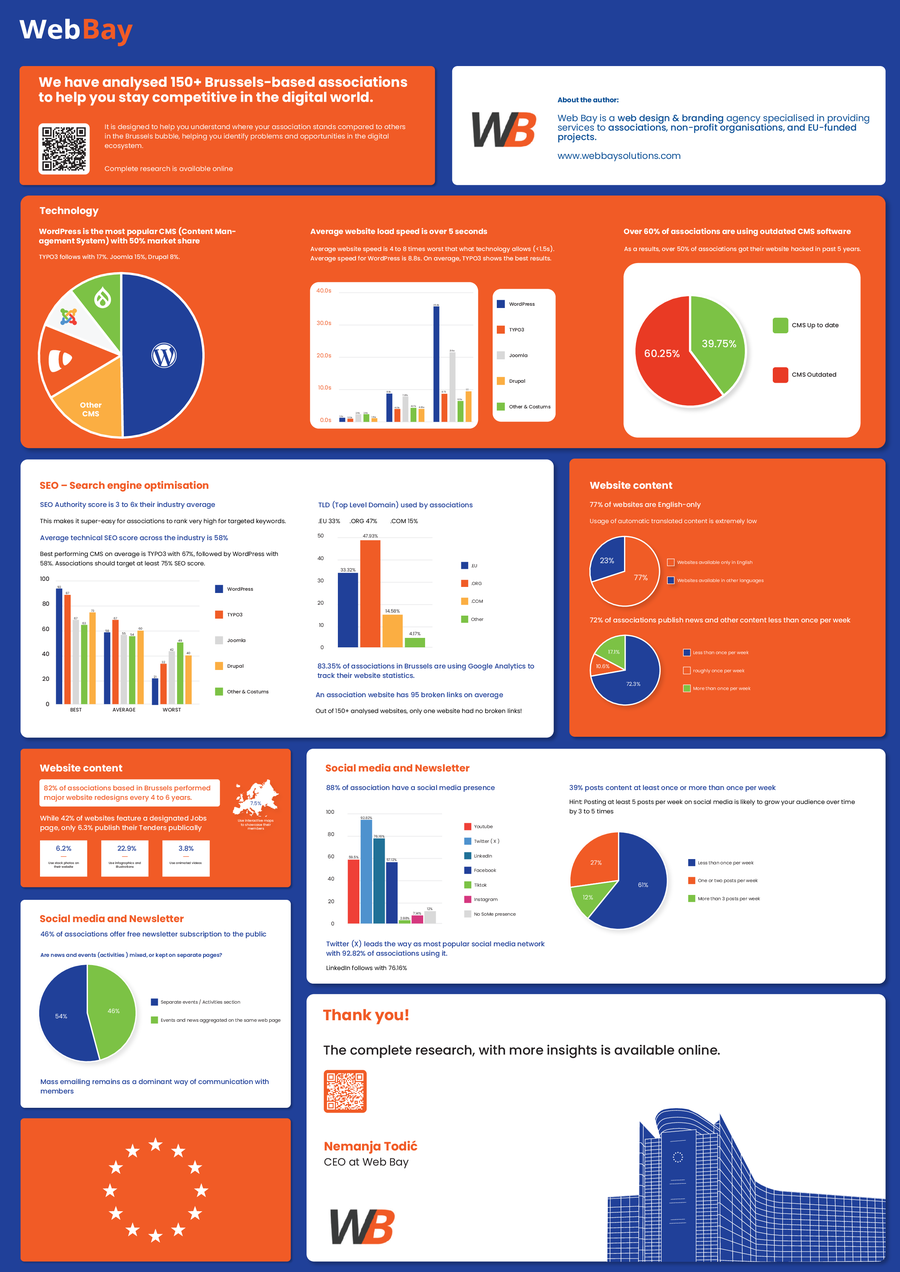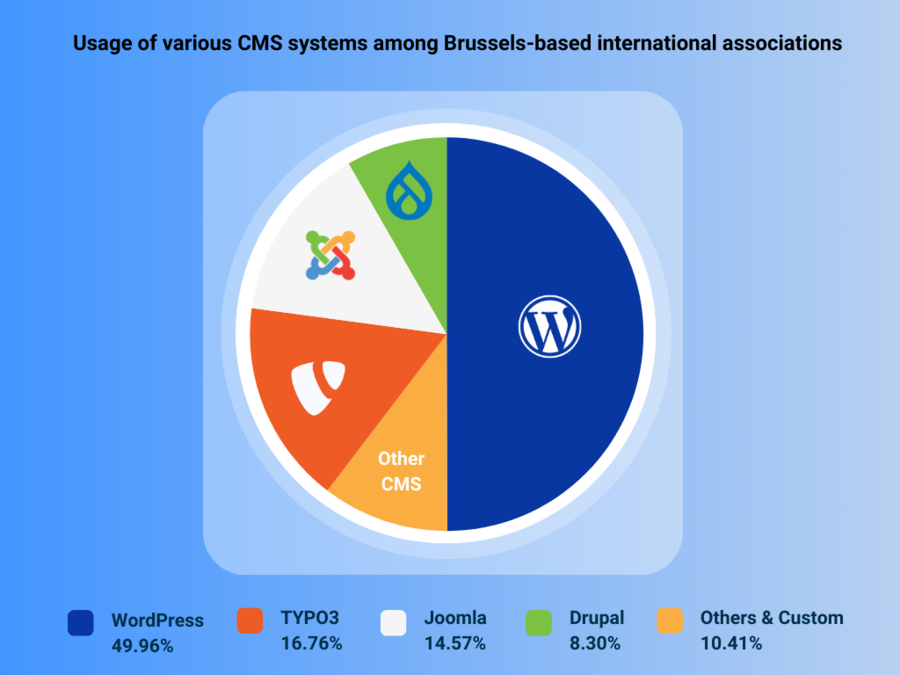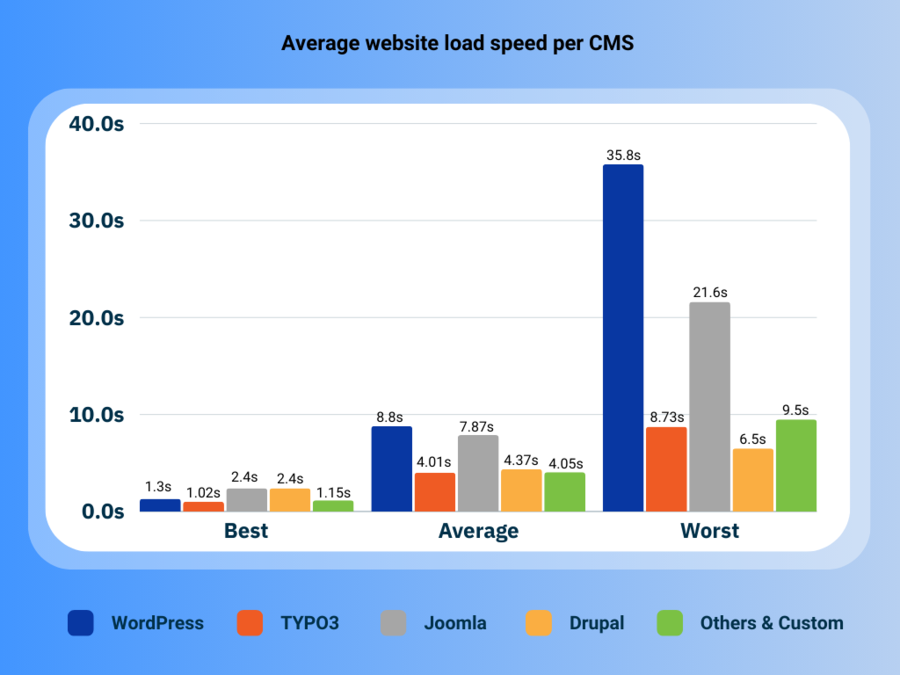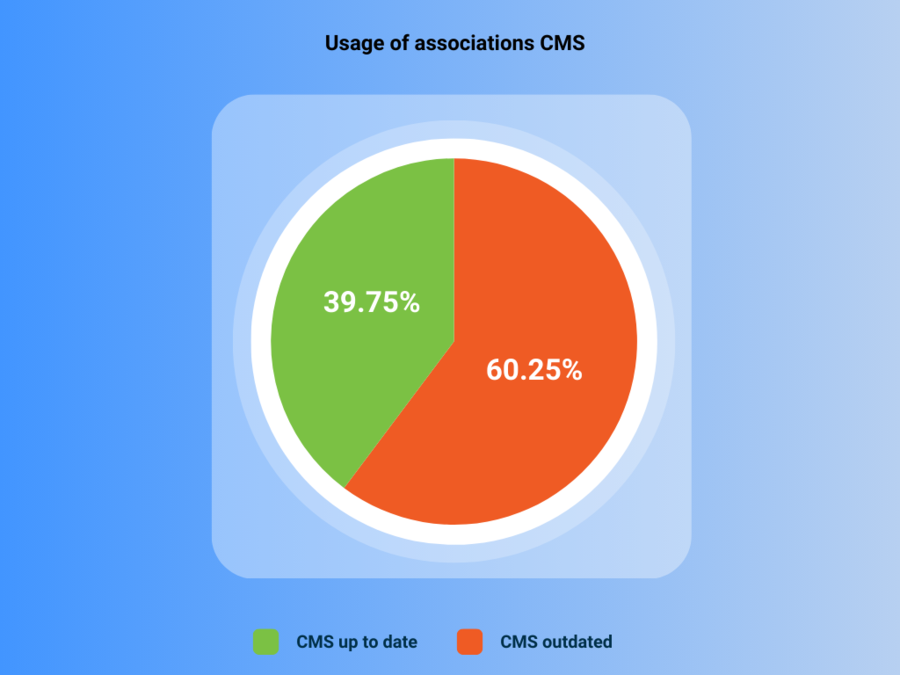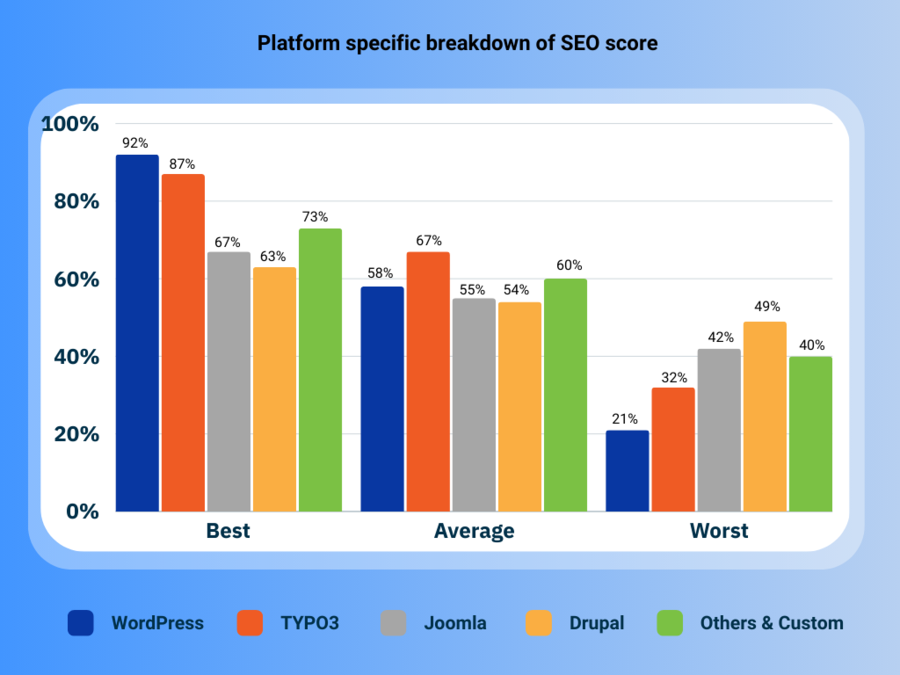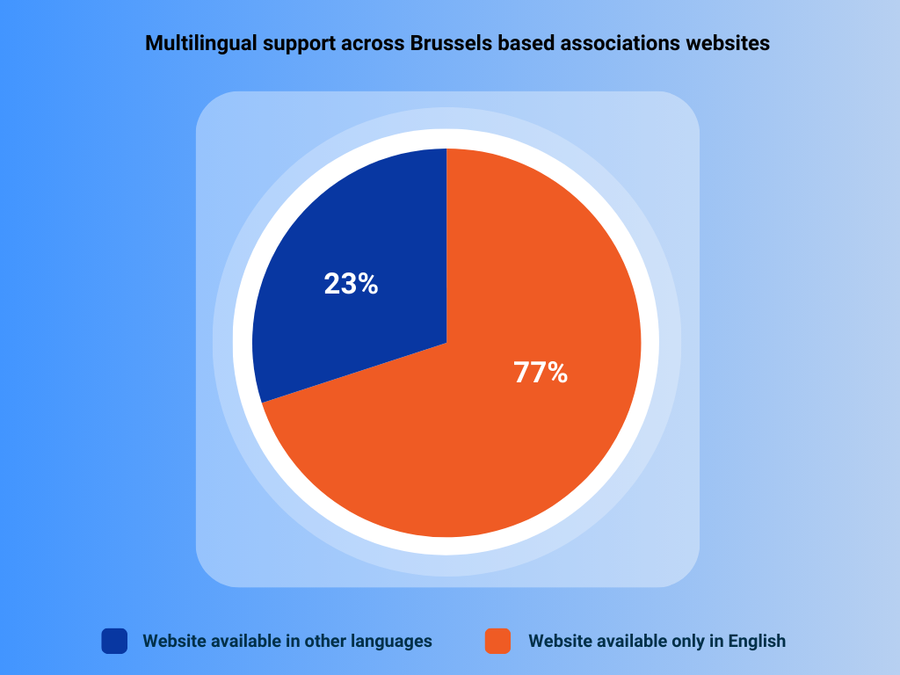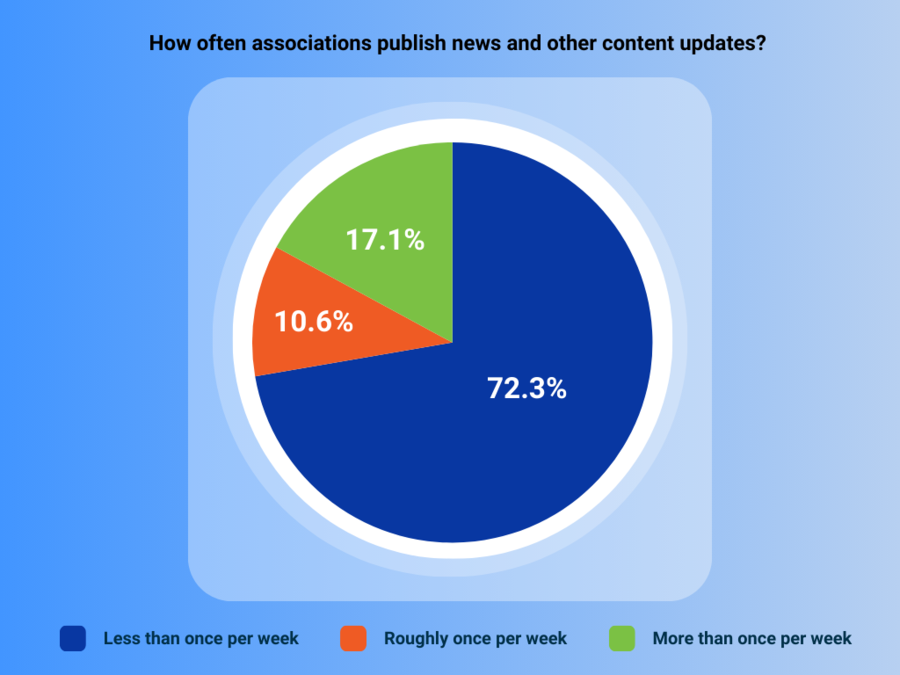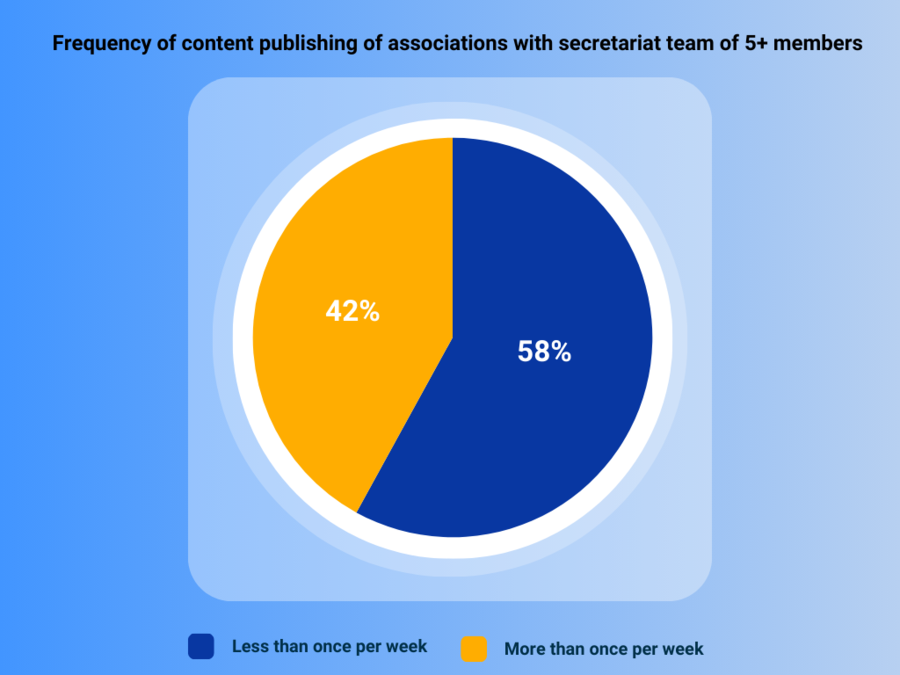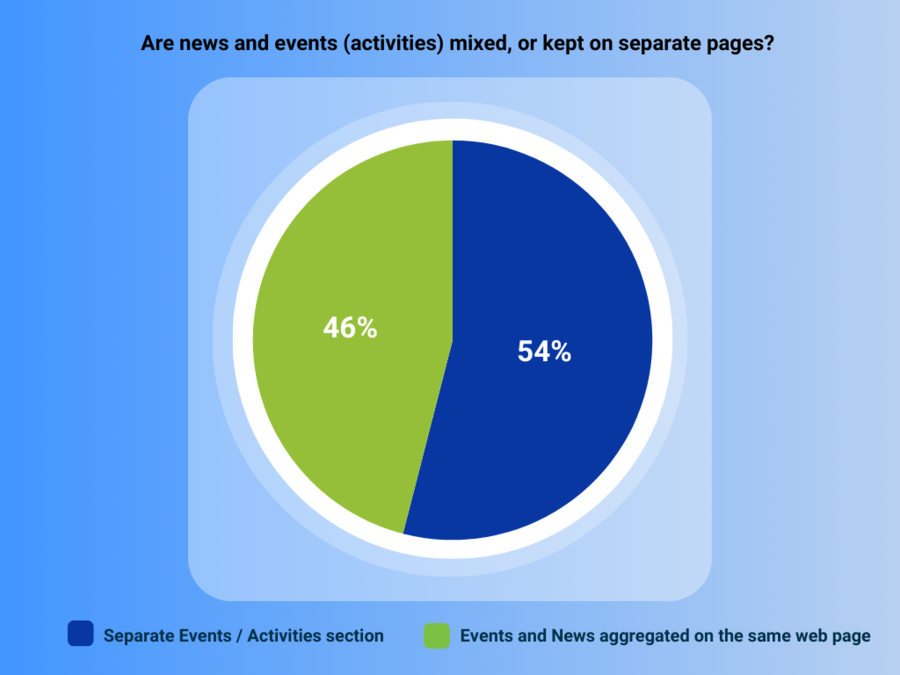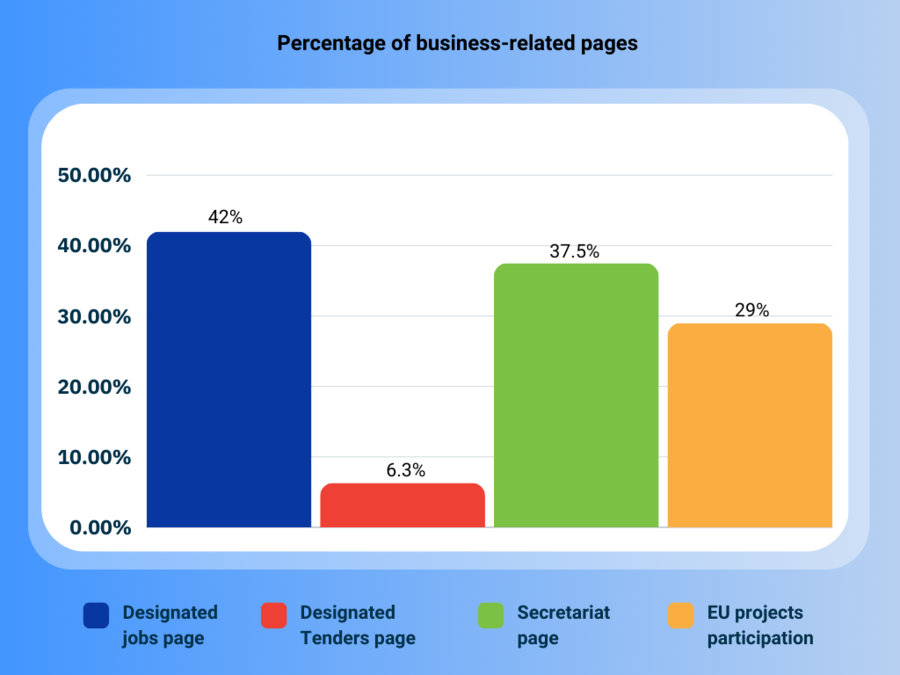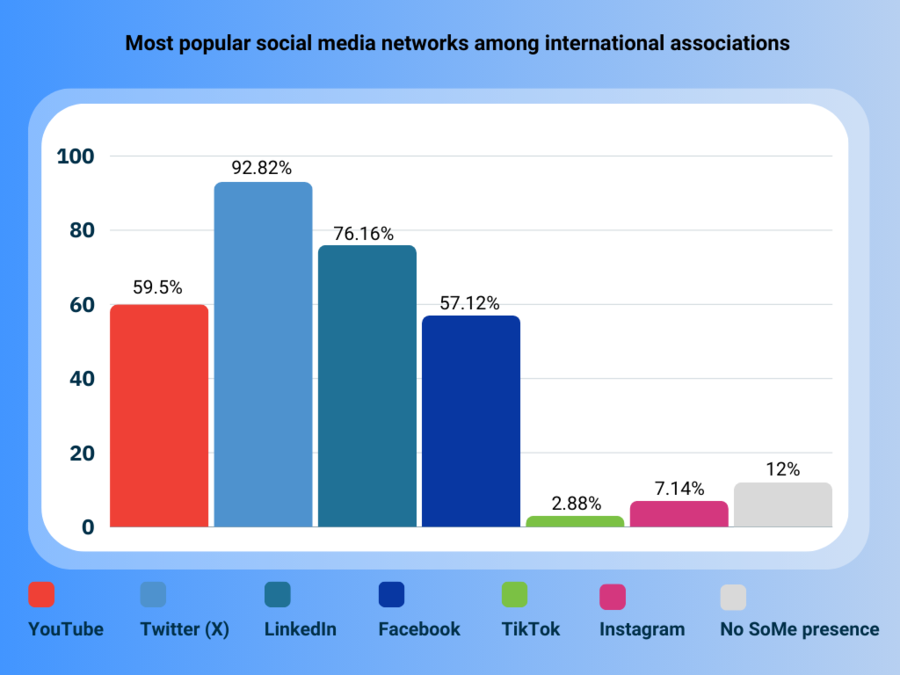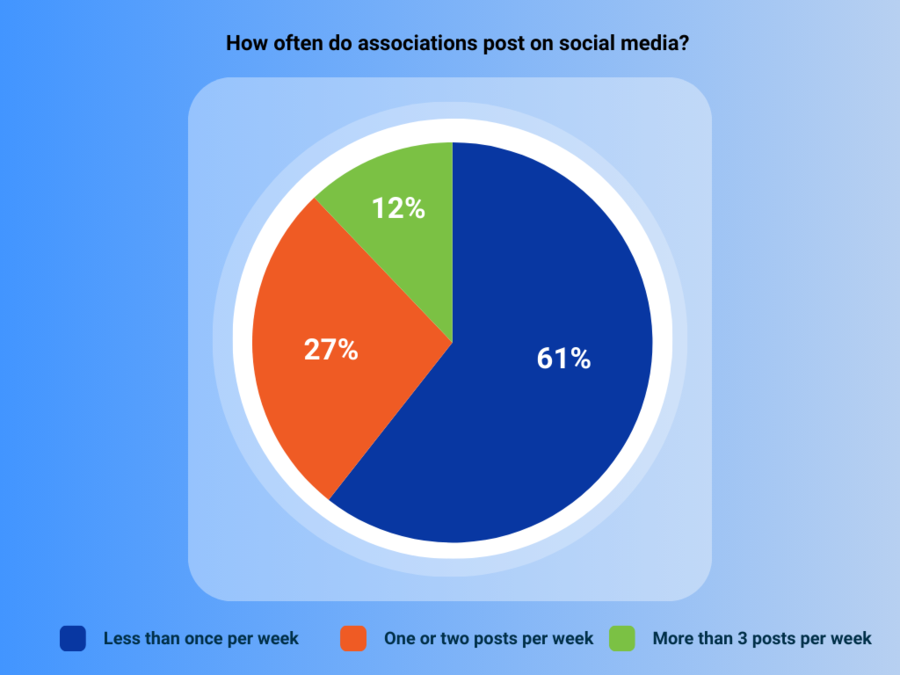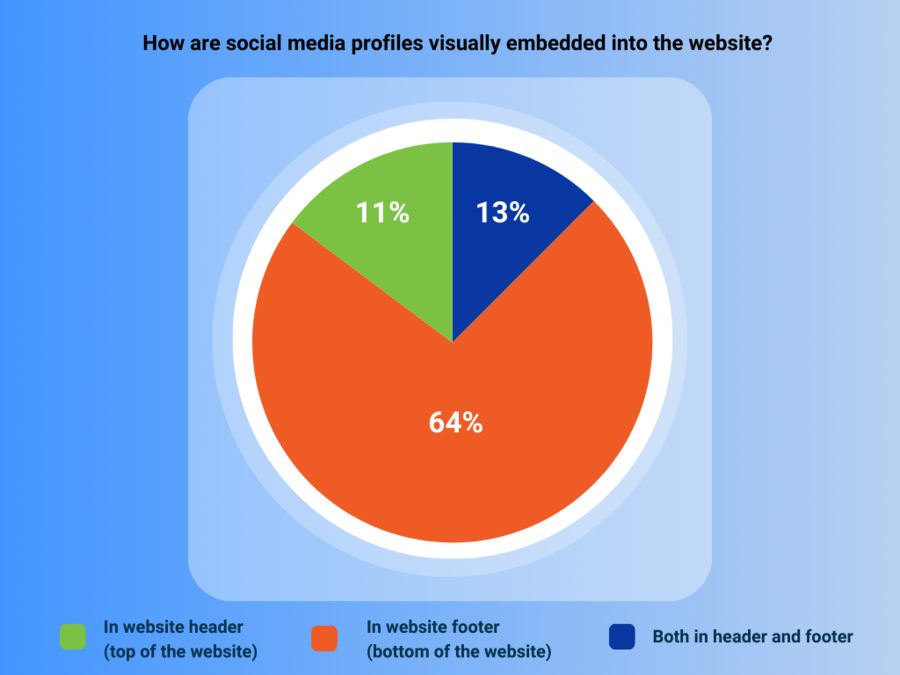![]() Written by Web Bay, in collaboration with others | Last update:
Written by Web Bay, in collaboration with others | Last update:
We have analysed 150+ Brussels-based associations to help you stay competitive in the digital world. It is designed to help you understand where your association stands compared to others in the Brussels bubble, helping you identify problems and opportunities in the digital ecosystem.
Amidst international associations in Brussels, digital presence emerges as a pivotal factor in shaping influence and engagement. Our analysis of business websites and social media profiles aims to reveal how effectively they manage their digital presence.
This article provides actionable insights that help associations improve their digital strategies and evaluate how they perform compared to others.
Technology
In this section, we will evaluate the technological aspects of the digital presence of associations.
Content Management System (CMS) used by associations
CMS serves as the backbone of countless websites, offering a user-friendly interface for creating, editing, and managing digital content. Essentially, CMS platforms provide a centralised hub for the communication team to easily organize and publish text, images, videos, and other multimedia elements without coding know-how. From popular options like WordPress to more specialized systems like Drupal and TYPO3, CMS platforms come in various forms, catering to the diverse needs of website owners and developers.
The right CMS for your association’s website is crucial, especially during the redesign process, as it impacts the functionality, scalability, and maintenance of a website. A compatible CMS not only streamlines content management tasks but also enhances the overall user experience. It ensures seamless navigation and accessibility across different devices.
Also, the right CMS empowers secretariats to adapt and evolve their digital presence according to changing trends and audience preferences. Factors such as ease of use, ability to customize, security features, and integration options should all be considered when selecting a CMS. These aspects directly influence the long-term success and sustainability of a redesigned website.
Most popular CMS among Brussels-based associations
We looked into 150+ association websites to better understand what is the most popular CMS solution among them.
Our finding: How does CMS impact website speed?
No one likes a slow website that takes forever to load. While almost all CMS solutions can be configured to server pages in an instant using various caching systems, we found out that often such systems are not put in place. As a result, websites are much slower, resulting in a poor user experience.
"Apart from the negative impact on user experience, having a slow website has a strong negative impact on SEO (ranking of the website in Google search). Improving website speed is a solid opportunity for many associations to gain more visibility and reach targeted stakeholders."
Nemanja Todić
CEO at Web Bay
Over 60% of associations are using outdated CMS versions
Keeping CMS up to date positively impacts website security and user experience, ensuring that the latest patches and fixes are applied timely before hackers can exploit vulnerabilities in your system. Let’s see how diligent associations are in keeping their systems up to date:
"In our experience almost half of the associations we worked with got their websites hacked in the past years. These clients greatly appreciate our dedication to long-term support and maintenance to keep their systems up to date.
The problem is, associations do not have strong IT knowledge, thus maintenance is oftentimes overlooked and mostly relied on their their contactor (web design agency). Most of these agencies only look for the next big project and pay very little attention to the maintenance of existing platforms. This leads to industry software being outdated and vulnerable to attack. "
Ivan Ziriković
Senior Web Developer at Web Bay
SEO – Search Engine Optimisation and Analytics
Search engine optimisation is critical for any association's digital presence. Apart from social media, organic traffic (visitors through search engines) is the largest source of visibility for a website. Therefore, it plays a key role in their communication activities, making it one of the most efficient and effective ways to reach stakeholders and influence the industry.
Authority – an amazing opportunity for associations to leverage
Probably the most important factor for staying on top of search engine results for relevant topics is – website authority. In essence, Google measures this authority by:
- number of backlinks (links from other websites to your website),
- mentions of your website and brand across the internet,
- quality of the content you publish, and
- age and consistency of the service you offer.
As associations naturally tick all of these boxes, their websites have exceptionally high website (domain) authority scores – typically 3x to 6x the industry average.
An association website authority score is typically 3 to 6x the industry average. This makes it super-easy for associations to rank very high for targeted keywords.
Thus, investing in SEO of your association’s website will yield significant results, that can be witnessed faster than the industry average of 6 to 9 months period.
At Web Bay, we saw a multiple 50%+ increase in website visits by implementing basic technical SEO improvements.
Having this in mind, let’s look at the technical side and explore how well association websites are optimised for SEO.
Technical SEO score
Apart from website authority and content quality, a key SEO factor is the technical optimisation of a website. This accounts for all the technical stuff web developers can do to make a website look good and favourable to Google. This covers everything from proper HTML semantics and meta tags to XML sitemaps and website speed.
We already identified that associations have a huge advantage in authority scores, giving them an edge in the SEO game. Now let’s look into our findings regarding the technical optimisation of the websites we analysed:
| Average SEO score across the industry: 58% |
With an industry average of 58%, it’s clear that there is a lot of room for improvement.
Web Bay offer: Take advantage of our extensive SEO experience in the Brussels bubble and schedule a free consultation call with us. We will look into your website, analyse content issues, opportunities, and share many helpful tips to get you on your way to the top of the search engines. Send us an email to schedule your free consultation call.
It’s worth mentioning that almost any CMS platform can be optimized for a high SEO score, thus the result is mostly impacted by contractor (web design agency) capabilities rather than the CMS itself.
* We utilized sitechecker.pro, one of the most popular and reliable SEO testing tools, to facilitate our research.
TLD (Top Level Domain) used by associations
Top Level Domains impact your SEO and reputation. Going with a geo-code such as .eu will help you rank as an EU-focused association establishing a profound brand. For Pan-European and worldwide associations, the .org domain is the perfect choice as it communicates authority & impartiality.
Let’s look at TLD’s breakdown based on our research:
Use of Google Analytics to track website performance
Google Analytics is the most popular free software to track the overall website performance including visits from different devices and sources, as well as user behaviour.
| Based on our research, 83.35% of associations in Brussels are using Google Analytics to track their website statistics. |
While Google Analytics is widely used, communication teams typically lack training needed to utilizing Google Analytics to its full potential. This tool can unravel many useful information on website performances, providing a strong basis for data-driven decisions and improvements.We strongly suggest to communication professionals to invest time into an advanced Google Analytics course.
Alarming discovery: high volume of dead links
Websites are constantly changing, growing, and adapting. As a part of that process, some pages and documents are being moved or deleted regularly. While doing this, it is important to update links to these pages and documents, otherwise dead links will be created. This produces the infamous “404 Page not found” errors.
| Our research indicates that an association website has 95 broken links on average, ranging from 5 to 450+ in some cases. Out of 150+ analysed websites, only one website had no broken links! |
Web Bay offer: Web Bay can help you identify broken links on your website, free of charge. Just send us an email and we will prepare an Excel document listing all your broken links, so you can fix them and improve your website.
Content and Design
Let’s look into the habits of associations about their content, website structure, and design preferences.
Multilingualism of association websites
While international associations communicate primarily in English, many of them offer translations of their website to other languages. We looked deeper into this, analysing how often a website offers alternative translations and which ones.
It comes as no surprise that the most popular languages after English are French and Spanish. They are followed by German, Italian, and Russian.
An important finding is that among those that offer websites in languages other than English, only 6.5% of them rely on automatic translations.
Automatically translated content is regarded as low quality, to the extent that it may hurt the association's image if it’s being used. However, in recent years’ platforms such as DeepL and Google Translate made significant progress in their algorithms making machine-translated content better and more competitive. In combination with a quick human review of such content, it ensures crisp and high-quality translation with minimal investment.
Connection between multilingual content and SEO
Translating websites to other languages offers one significant advantage, which is a solid boost to your association's visibility on search engines.
If a news article is translated automatically into 24 EU languages, it creates 24 localized web pages instead of just one. Thus, associations are now much more visible to search engine traffic, resulting in their news ranking much better on a local level across the EU.
At Web Bay, we advise integrating automatic translation on news, to boost the reach and visibility on search engines. In such cases, the website will show a clear disclaimer stating that content is automatically translated. Main website pages should remain available in a few selected languages and manually or “hybrid” translated. This is a cost-effective way that maximize results.
Search engines, similar to social media algorithms, prefer websites/profiles that stick to a regular publishing schedule. Therefore, even if an association cannot publish beyond once per month or by-weekly, adhering to this schedule will noticeably improve its ranking and visibility.
Now let’s look into associations with secretariats of at least 5 members:
Naturally, bigger secretariats have the advantage of producing more content. These numbers should help you design your content and communication strategy.
Next, we looked into how events are presented and promoted. While some associations feature dedicated sections on the website to promote their activities and events, others are aggregating events and news into a single page.
Having a dedicated section for promoting events and activities contributes to event visibility and ease of navigation for your audience. However, if there is not enough activity to keep such a section alive, it’s better to communicate activities and events through your news page.
Use of multimedia and graphics in communication
Nowadays website visitors are often scanning websites rather than reading the entire thing. This led to an explosion in visual communication, resulting in websites becoming less text-heavy and more interactive.
Here are some interesting findings from our analysis of the use of visuals on associations' websites:
Animated video production (also known as explainer videos) is not as expensive as it used to be. They offer a highly engaging way to present your association, EU project, campaign… A key benefit is that they work well both on website and social media posts. At Web Bay, we successfully used videos to explain complex EU projects to policymakers, the public, and other stakeholders in an easy-to-understand way.
More about our offer here.
Operation-related pages
Upon conducting our analysis of the types of pages available on association websites, we found that around 40% of them had a designated job page and a secretariat page. However, designated tender pages were quite minimally found on association websites which signified that only a few associations dealt with tenders. Among all the websites analysed, 29% of associations participated actively in EU projects.
We looked at some common bussines-related pages aiming to help you navigate through. We found that 42% of them had a designated Jobs page, which always helps with attracting talent. In our experience, even if you do not have an active opening, it is beneficial to have this page and invite candidates to submit their CVs along with the role they are aiming for. This allows you to communicate your future job openings more effectively.
Similarly, the Tenders page helps attract reliable contractors and more competitive offers. However, as Brussels-bubble is mostly network-oriented, it’s not a surprise that only 6.3% of associations are utilizing the Tenders page, while others rely on their existing connections, recommendations, and research.
Having a well-designed secretariat page helps in facilitating two-way communication with your audience, making your association more approachable and people-oriented. We were surprised to learn that only 37.5% of International associations based in Brussels feature a page dedicated to their secretariat.
How often do associations redesign their websites?
The frequency of website redesigns for international associations depends on several factors, including the organisation's specific goals, budget constraints, technological advancements, and shifts in design trends. However, international associations that were covered in our research undergo significant website redesigns every 4 to 6 years, with a few exceptions.
| 82% of associations based in Brussels performed major website redesigns every 4 to 6 years. |
This timeframe allows associations to stay polished on evolving digital technologies, adapt to changes in user behaviour and expectations, and refresh their online presence to remain relevant and competitive within their industries. Additionally, periodic redesigns enable organizations to incorporate new features, improve user experience, enhance accessibility, and align their digital strategies with evolving organizational objectives. While some associations may opt for more frequent updates or iterative improvements, others may extend the lifespan of their website design if it continues to effectively serve their needs and meet their audience's expectations.
Social media and Newsletter
It comes as no surprise that associations rely heavily on social media to communicate and disseminate information and knowledge to their stakeholders. Most of their digital reach is generated precisely through social media, making it a critical component of their digital life.
We looked into the most popular social media platforms, posting habits and frequency, as well as utilization of public newsletters.
Most popular social media networks among international associations
As per our findings, 88% of association websites have a social media presence across various channels. The most popular platform is X (formerly Twitter), followed by LinkedIn and YouTube. Instagram and TikTok were the least used platforms by associations since they are perceived as not business-oriented.
LinkedIn and Twitter and highly competitive, user feeds are saturated, and organic reach of your content is constantly declining as a result. Two ways to fight this are 1) quantity of content produced even to the expense of quality (yes, you read that right) and 2) dedicated budget to promote key posts.
How often do associations post on social media?
Social media is a charm when content is regularly posted on it since these platforms value fresh content and increased quantities. During our analysis of associations’ social media pages, we found out that roughly 39% of them posted content at least once or more than once per week. However, 61% of pages are still posting less than once per week.
Posting at least 5 posts per week on social media is likely to grow your audience over time by 3 to 5 times. As mentioned before, social media algorithms revolve around the theme of prioritising new content. Hence, the more you post, the better reach your content gets. However, it is important to note that quality and consistency in posting schedules go hand-in-hand.
How are social media profiles visually embedded into the website?
Social icons or snippets of recent social media posts are a great way to redirect your website visitors to your social media pages. However, their placement matters the most as per how many visitors can easily see them and are tempted enough to click on them.
In association websites that we analysed, 64% of them had social media profiles visually embedded towards the bottom (footer). Only a slight 11% of them had their profiles embedded solely at the top (header).
Newsletter subscription availability
We assume that (almost) all associations are communicating to their members through a newsletter. What we wanted to explore is - how often they offer newsletters designed for the public.
Newsletters are a great way to educate your industry readers and keep them informed regarding events and industry-specific topics. It is also a great way to build an association’s reputation in the industry and among its stakeholders.
Our research revealed that over half of associations did not offer newsletter subscriptions to their visitors. The remaining websites did feature newsletters that visitors could easily sign up for through email, which allowed them to get bi-weekly, weekly, or monthly newsletters.
Summary and conclusion
We wish to thank everyone that made this research possible, from individual contributors to associations that took part into shaping this article.
And now we would like to hear from you:
What’s your #1 takeaway from this research?
Or maybe you have a question?
Either way feel free to share it through the form below.
What’s your #1 takeaway from this research?
Or maybe you have a question?
Either way feel free to share it through the form behind.
